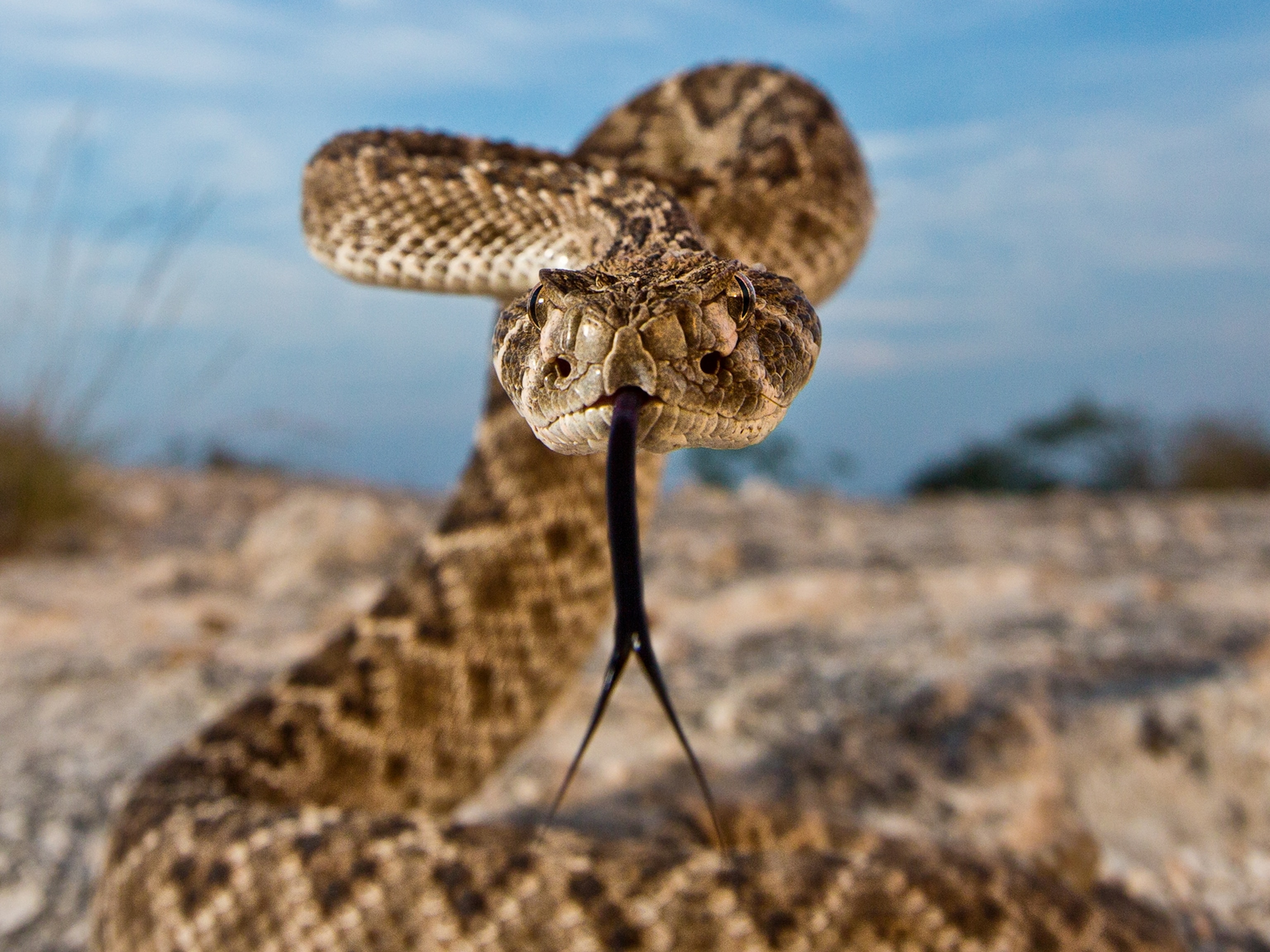
Opossums Could Hold the Key to Saving Snakebite Victims
Scientists pinpoint a compound in the marsupial's blood that neutralizes venom—could it help in the quest to create a universal antivenom?
The opossum may be known for being stupid, ugly, and the animal voted Most Likely to Become Roadkill in high school, but scientists say its blood may be key to fighting the effects of snakebites worldwide.
In lab experiments with mice, a team discovered the exact molecule, called a peptide, in the North American marsupial's blood that can neutralize snake venom. The peptide worked against several venomous snake species, including America's western diamond back rattlesnake (Crotalus atrox) and India's Russell viper (Daboia russelii).
"The mice that were given the venom incubated with the peptide never showed any signs [of being sick]," says Claire Komives, a professor of chemical engineering at San Jose State University in California. (Also see "Could Black Mamba Snake Venom Replace Morphine?")
"It was like a miracle, that this peptide really has this activity," says Komives, who presented her preliminary findings on March 23 at a meeting of the American Chemical Society in Denver.
Scientists have known since the 1940s that Virginia opossums (Didelphis virginiana) possessed some level of immunity to snake venom, Komives notes. Other mammals, such as ground squirrels and honey badgers, also have natural immunity to venom.
(These snakes can jump—and scientists want to know why.)
But now that her team has isolated the component responsible for the opossum's superpower, Komives says, scientists could mass produce the substance as an inexpensive and universal antivenom for use in the developing world. (See pictures of venomous snakes.)
The World Health Organization estimates that as many as 94,000 people die each year as a result of snakebites. While antivenoms already exist for many snake species, the compounds can be costly and need to be tailored to each animal—making a universal antivenom vital to saving lives.
Not So Fast?
The opossum research is fascinating, but venom expert Zoltan Takacs cautions against popping open the champagne just yet.
The problem is that a snake's venom contains hundreds of different compounds, each with its own method of subduing the victim.

"It is a multipoint assault. One set of toxins might attack your nerve cells while another set of toxins attacks your muscles," says Takacs, who is also a National Geographic emerging explorer.
"Once you have a hundred toxins or more in your body, you would have to deactivate all of them, or at least the really bad ones, in order to prevent symptoms of the bite."
Takacs worries that isolating a single peptide from opossums will most likely neutralize only one class of toxins, while the others would continue to wreak havoc on the body. (See "What's the Most Toxic Snake?")
Furthermore, he says the specific compounds found in a snake's venom can vary depending on the species, the sex, the snake's age, and even geographic location. So even if the opossum peptides work on one sample of Russell viper in the lab, the antidote might not hold up against all Russell vipers, which kill thousands of people a year in India.
Asked about some of these hurdles, Komives says Takacs definitely has a point.
However, she said her research speaks for itself.
"It was like a miracle, that this peptide really has this activity."Claire Komives, chemical engineering professor
"It is almost not reasonable that the peptide alone neutralized the rattlesnake venom," she says in a follow-up email, "but that is what happened."
The idea that a single peptide could combat venom in several snakes is "truly revolutionary," agrees Robert Harrison, a venom expert at the U.K.'s Liverpool School of Tropical Medicine.
Though "invigoratingly innovative," the approach requires much more experimentation, notes Harrison, who's working on a universal antivenom project.
Antivenom Crucial
Any new research on venom and antivenom is crucial, says Takacs, who has witnessed the devastating effect of snakebite firsthand.
He has seen a man lying on a gurney in rural Nepal six hours after being bitten by a cobra. Antivenom is rare there, as are expensive medical devices such as artificial regulators, so the man remained alive yet in complete respiratory paralysis. His brother sat next to him using a rubber ball to manually squeeze air into his lungs for each breath. Takacs never found out what happened to the man.
The first antivenom was invented over a hundred years ago, says Takacs. But because of various roadblocks, such as the complexities of the venom compounds involved and the cost of research, much of the world is still powerless to fight the effects of snakebites.
"There are very few situations in life," he says, "where you get up in the morning perfectly healthy and by the end of the day you're dead."




